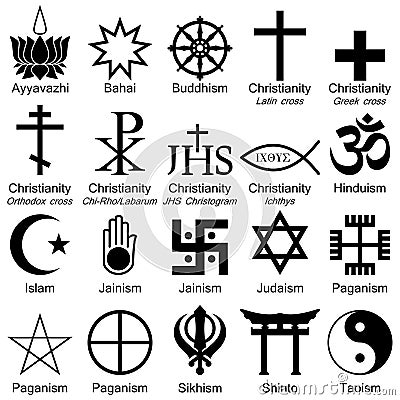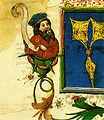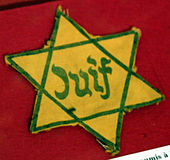
Donald Trump on Monday proposed an ideological test for those seeking entrance into the U.S. as he warned that the threat of terrorist attacks from “immigrants and the children of immigrants” is on the rise.
Speaking in Youngstown, Ohio, in what his campaign billed a major foreign policy address, Trump proposed an “extreme vetting” system that he said would ensure that only those who are committed to America and its Constitution are allowed in.
“The Trump administration will establish clear principles governing all decisions made in regard to immigration, and we will be tough and we will be even extreme,” the GOP presidential nominee said.
“We should only admit into this country those who share our values and respect our people,” he continued. “In the Cold War, we had an ideological screening test. The time is overdue to develop a new screening test for the threats we face today. I call it extreme vetting. I call it extreme, extreme vetting. Our country has enough problems, we don’t need more.”
Trump said his system would ensure that “sympathizers of terrorist groups” and “all people with hostile attitudes towards our country or its principles” would be denied entry.
“Those who do not believe in our Constitution or support bigotry or hatred will not be admitted for immigration into our country,” Trump said. “Only those who we expect to flourish in our country and to embrace a tolerant American society should be issued visas.”
Trump did not get into the details of the screening process.
Democrats mocked Trump over the proposed ideological test in the run-up to his speech, saying that the billionaire's rhetoric towards Muslims and other minority groups is at odds with U.S. values and so he would be denied entry into the country.
Trump is seeking to stake his claim as the “law and order” candidate who will stamp out the threat of terror by strengthening U.S. border policy.
On Monday, he accused Clinton of putting the nation at risk by supporting an increase in foreign refugees seeking asylum in the U.S., and again reiterated his support for a temporary ban on those entering the country from dangerous parts of the world.
“I will ask the State Department and Department of Homeland Security to identify a list of regions where adequate screenings cannot take place,” Trump said. “There are many such regions. We will stop processing visas from those areas until such time as it is deemed safe to resume based on new circumstances or new procedures. The size of current immigration flows are too large to perform adequate screening.”
Speaking in Youngstown, Ohio, in what his campaign billed a major foreign policy address, Trump proposed an “extreme vetting” system that he said would ensure that only those who are committed to America and its Constitution are allowed in.
“The Trump administration will establish clear principles governing all decisions made in regard to immigration, and we will be tough and we will be even extreme,” the GOP presidential nominee said.
“We should only admit into this country those who share our values and respect our people,” he continued. “In the Cold War, we had an ideological screening test. The time is overdue to develop a new screening test for the threats we face today. I call it extreme vetting. I call it extreme, extreme vetting. Our country has enough problems, we don’t need more.”
Trump said his system would ensure that “sympathizers of terrorist groups” and “all people with hostile attitudes towards our country or its principles” would be denied entry.
“Those who do not believe in our Constitution or support bigotry or hatred will not be admitted for immigration into our country,” Trump said. “Only those who we expect to flourish in our country and to embrace a tolerant American society should be issued visas.”
Trump did not get into the details of the screening process.
Democrats mocked Trump over the proposed ideological test in the run-up to his speech, saying that the billionaire's rhetoric towards Muslims and other minority groups is at odds with U.S. values and so he would be denied entry into the country.
Trump is seeking to stake his claim as the “law and order” candidate who will stamp out the threat of terror by strengthening U.S. border policy.
On Monday, he accused Clinton of putting the nation at risk by supporting an increase in foreign refugees seeking asylum in the U.S., and again reiterated his support for a temporary ban on those entering the country from dangerous parts of the world.
“I will ask the State Department and Department of Homeland Security to identify a list of regions where adequate screenings cannot take place,” Trump said. “There are many such regions. We will stop processing visas from those areas until such time as it is deemed safe to resume based on new circumstances or new procedures. The size of current immigration flows are too large to perform adequate screening.”
The yellow badge (or yellow patch), also referred to as a Jewish badge (German: Judenstern, lit.Jews' star), was a cloth patch that Jews were ordered to sew on their outer garments to mark them as Jews in public at certain times in certain countries, serving as a badge of shame.
Usage
Islamic world
The practice of wearing special markings in order to distinguish Jews and other non-Muslims (Dhimmis) in Muslim-dominated countries seems to have been introduced by Umayyad Caliph Umar II in early 8th century.The practice was reissued and reinforced by Caliph Al-Mutawakkil (847–61), subsequently remaining in force for centuries. A genizah document from 1121 gives the following description of decrees issued in Baghdad:
Medieval Catholic Europe
In largely Catholic Medieval Europe Jews and Muslims were required to wear distinguishable clothing in some periods. These measures were not seen as being inconsistent with Sicut Judaeis. Although not the first ecclesiastic requirement for non-Christians to wear distinguishable clothing, the Fourth Council of the Lateran headed by Pope Innocent III ruled in 1215 that Jews and Muslims must wear distinguishable dress (Latinhabitus). Canon 68 reads, in part:
Innocent III had in 1199 confirmed Sicut Judaeis, which was also confirmed by Pope Honorius III in 1216. In 1219, Honorius III issues a dispensation to the Jews of Castile, the largest Jewish population in Europe. Spanish Jews normally wore turbans in any case, which presumably met the requirement to be distinctive. Elsewhere, local laws were introduced to bring the canon into effect. The identifying mark varied from one country to another, and from period to period.
In 1227, the Synod of Narbonne, in canon 3, ruled:
In 1274, Edward I of England enacted the Statute of Jewry, which also included a requirement:
In German-speaking Europe, a requirement for a badge was less common than the Judenhut or Pileum cornutum (a cone-shaped head dress, common in medieval illustrations of Jews). In 1267, in a special session, the Vienna city council required Jews to wear a Judenhut; the badge does not seem to have been worn in Austria. There is a reference to a dispensation from the badge in Erfurt on 16 October 1294, the earliest reference to the badge in Germany.
There were also attempts to enforce the wearing of full-length robes, which in late 14th century Rome were supposed to be red. In Portugal a redstar of David was used.[16]
Enforcement of the rules was variable; in Marseilles the magistrates ignored accusations of breaches, and in some places individuals or communities could buy exemption. Cathars who were considered "first time offenders" by the Catholic Church and the Inquisition were also forced to wear yellow badges, albeit in the form of crosses, about their person.
The yellow badge is different from the Jewish hat (or Judenhut), a cone-shaped hat, which is seen in many illustrations from before this date, and remained the key distinguishing mark of Jewish dress in the Middle Ages. From the 16th century, the use of the Judenhut declined, but the badge tended to outlast it, surviving into the 18th century in places.
Nazi Europe
After the German invasion of Poland in 1939 there were initially different local decrees requiring Jews to wear a distinctive sign under the General Government. The sign was a white armband with a blue Star of David on it, in the Warthegau a yellow badge in the form of a Star of David on the left side of the breast and on the back. The requirement to wear the Star of David with the word Jude (German for Jew) inscribed in faux Hebrew letters was then extended to all Jews over the age of six in the Reich and the Protectorate of Bohemia and Moravia (by a decree issued on September 19, 1941, signed by Reinhard Heydrich) and was gradually introduced in other German-occupied areas, where local words were used (e.g., Juif in French, Jood in Dutch).
One observer reported that the star increased German non-Nazi sympathy for Jews as the impoverished citizens who wore them were, contrary to Nazi propaganda, obviously not the cause of German failure in the east. In Czechoslovakia, the government had to ban hat tipping toward Jews and other courtesies that became popular as protests against the German occupation. A whispering campaign that claimed that the action was in response to the United States government requiring German Americans to wear swastikas was unsuccessful.
Timeline
Islamic world
- 717-720
- Caliph Umar II orders Jews to wear vestimentary distinctions (called giyār, i.e., distinguishing marks)
- 847–61
- Caliph Al-Mutawakkil reinforces and reissues the edict
- 887/8
- Saracen governor of Sicily orders Jews to wear on their garments and put on their doors a piece of cloth in the form of donkey and to wear yellow belts and special hats.
Medieval and Early Modern Europe
- 1215
- Fourth Lateran Council headed by Pope Innocent III declares: "Jews and Saracens of both sexes in every Christian province and at all times shall be marked off in the eyes of the public from other peoples through the character of their dress."
- 1219
- Pope Honorius III issues a dispensation to the Jews of Castile. Spanish Jews normally wore turbans in any case, which presumably met the requirement to be distinctive.
- 1222
- Archbishop of Canterbury Stephen Langton orders English Jews to wear a white band two fingers broad and four fingers long.
- 1227
- Synod of Narbonne rules: "That Jews may be distinguished from others, we decree and emphatically command that in the center of the breast (of their garments) they shall wear an oval badge, the measure of one finger in width and one half a palm in height."
- 1228
- James I orders Jews of Aragon to wear the badge.
- 1265
- The Siete Partidas, a legal code enacted in Castile by Alfonso X but not implemented until many years later, includes a requirement for Jews to wear distinguishing marks.
- 1267
- In a special session, the Vienna city council forces Jews to wear Pileum cornutum (a cone-shaped head dress, common in medieval illustrations of Jews); the badge does not seem to have been worn in Austria.
- 1269, June 19
- France. (Saint) Louis IX of France orders all Jews found in public without a badge (French: rouelle or roue, Latin: rota) to be fined ten livres of silver. The enforcement of wearing the badge is repeated by local councils, with varying degrees of fines, at Arles 1234 and 1260, Béziers1246, Albi 1254, Nîmes 1284 and 1365, Avignon 1326 and 1337, Rodez 1336, and Vanves 1368.
- 1274
- The Statute of Jewry in England, enacted by King Edward I, enforces the regulations. "Each Jew, after he is seven years old, shall wear a distinguishing mark on his outer garment, that is to say, in the form of two Tables joined, of yellow felt of the length of six inches and of the breadth of three inches."
- 1294, October 16
- Erfurt. The earliest mention of the badge in Germany.
- 1315–1326
- Emir Ismail Abu-I-Walid forces the Jews of Granada to wear the yellow badge.
- 1321
- Henry II of Castile forces the Jews to wear the yellow badge.
- 1415, May 11
- Bull of the Antipope Benedict XIII orders the Jews to wear a yellow and red badge, the men on their breast, the women on their forehead.
- 1434
- Emperor Sigismund reintroduces the badge at Augsburg.
- 1528
- The Council of Ten of Venice allows the newly arrived famous physician and professor Jacob Mantino ben Samuel to wear the regular black doctors' cap instead of Jewish yellow hat for several months (subsequently made permanent), upon the recommendation of the French and English ambassadors, the papal legate, and other dignitaries numbered among his patients.
- 1555
- Pope Paul IV decrees, in his Cum nimis absurdum, that the Jews should wear yellow hats.
- 1566
- King Sigismund II passes a law that required Lithuanian Jews to wear yellow hats and head coverings. The law was abolished twenty years later.
- 1710
- Frederick William I of Prussia abolished the mandatory Jewish yellow patch in return for a payment of 8,000 thaler (about $75,000 worth of silver at 2007 prices) each.
Nazi Europe
- 1939, September and October
- A number of local German occupational commanders ordered Jewish Poles in their areas to wear an identifying mark under the threat of death. There were no consistent requirements as to its color and shape: it varies from a white armband to a yellow Star of David badge.
- 1939, 23 November
- Hans Frank ordered all Jewish Poles above the age of 11 years in German-occupied Poland to wear white armbands with a blue Star of David.
- 1940
- A popular legend portrays king Christian X of Denmark wearing the yellow badge on his daily morning horseback ride through the streets ofCopenhagen, followed by non-Jewish Danes responding to their king's example, thus preventing the Germans from identifying Jewish citizens. Queen Margrethe II of Denmark has explained that the story was not true. No order requiring Jews to wear identifying marks was ever introduced in Denmark.
- 1941, June 4
- Jews in Independent State of Croatia ordered to wear "Jewish insignia".
- 1941, July
- Jewish Poles in German-occupied Soviet-annexed Poland, Jewish Lithuanians, Latvians and Estonians as well as Soviet Jews in German-occupied areas were obliged to wear white armbands or yellow badges.
- 1941, August 8
- All Romanian Jews were ordered to wear the yellow badge.
- 1941, August 13
- The yellow badge was the only standardised identifying mark in the German-occupied East; other signs were forbidden.
- 1941, September 1
- Jewish Germans and Jews with citizenship of annexed states (Austrians, Czechs, Danzigers) from the age of six years were ordered to wear the yellow badge when in public.
- 1941, September 9
- Slovakia ordered its Jews to wear yellow badges.
- 1941/1942
- Romania started to force Jews in newly annexed territories, denied Romanian citizenship, to wear the yellow badge.
- 1942, March 13
- The Gestapo ordered Jewish Germans and Jews with citizenship of annexed states to mark their apartments or houses at the front door with a white badge.
- 1942, April 29
- Jewish Dutch people forced to wear the yellow badge.
- 1942, June 3
- Jewish Belgians forced to wear the yellow badge.
- 1942, June 7
- Jews in occupied France were ordered to wear a yellow star, but the Vichy Regime refused to comply with that.
- 1942, August
- With the German annexation of Luxembourg, the yellow badge was introduced there.
- 1942, August
- Under German pressure, Bulgaria ordered its Jewish citizens to wear small yellow buttons, but contravention was not prosecuted.
- 1942, November
- With the occupation of the French Zone libre Jews there were also forced to wear the yellow badge.
- 1944, March 31
- After the occupation of Hungary, the German occupants ordered Jewish Hungarians and Jews with defunct other citizenships (Czechoslovakian, Romanian, Yugoslavian) in Hungarian-annexed areas to wear the yellow badge.








No comments:
Post a Comment